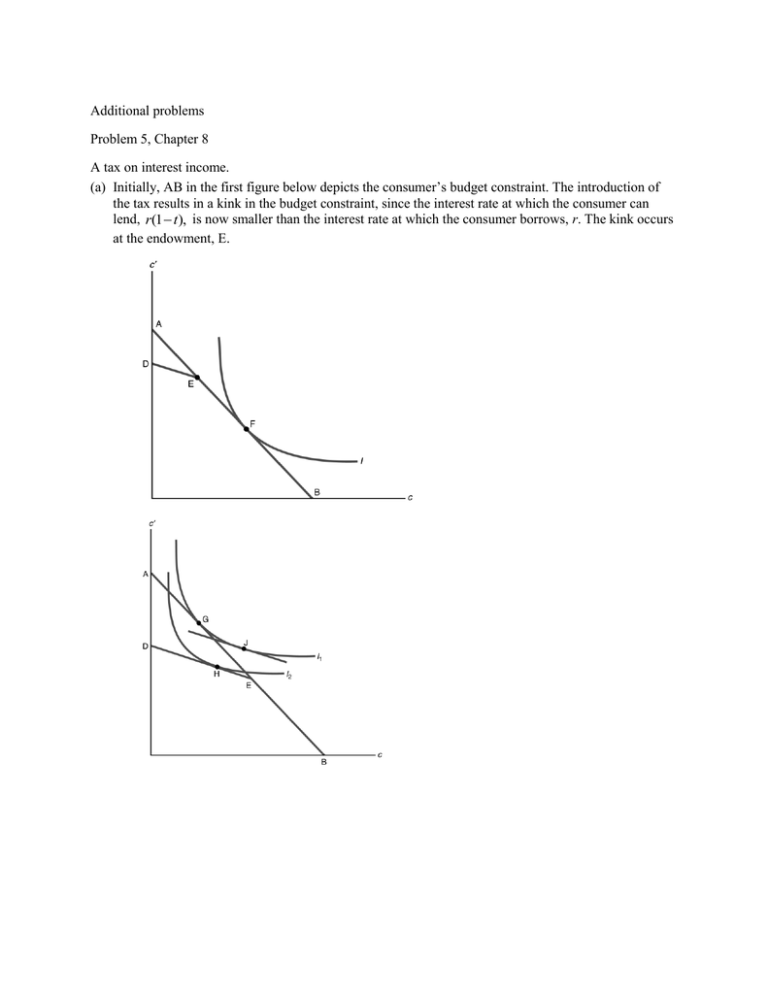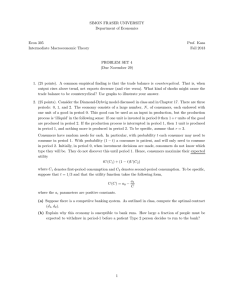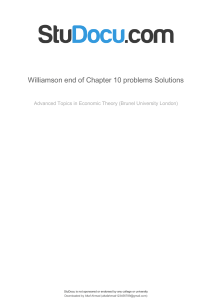Additional problems Problem 5, Chapter 8 A tax on interest income
advertisement

Additional problems Problem 5, Chapter 8 A tax on interest income. (a) Initially, AB in the first figure below depicts the consumer’s budget constraint. The introduction of the tax results in a kink in the budget constraint, since the interest rate at which the consumer can lend, r(1 t ), is now smaller than the interest rate at which the consumer borrows, r. The kink occurs at the endowment, E. (b) The first figure above shows the case of a consumer who was a borrower before the imposition of the tax. This consumer is unaffected by the introduction of the tax. The second figure above shows the case of a consumer who was a lender before the imposition of the tax. Initially the consumer chooses point G, and then chooses point H after the imposition of the tax. There is a substitution effect that results in an increase in first-period consumption and a reduction in second-period consumption, and moves the consumer from point G to point J. Savings also fall from point G to point J. The income effect is the movement from point J to point H, and the income effect reduces both first-period and second-period consumption, and increases savings. On net, consumption must fall in period 2, but in period 1, consumption may rise or fall. The figures above show the case in which first-period consumption increases, which is a case where the substitution effect dominates. Problem 3, Chapter 9 3. (a) The bank will be lending so that it will be able to get the loan back in expectation. Thus, the new collateral constraint is s (1 r) a pH which leads to c y t a pH . (1 r ) This is much like Figure 9.5 in the textbook, simply with a lower collateral value. (b) If the collateral is more likely to be of no value, banks will lend less. Thus, some household will not be able to borrow as much as they could before, leading for them and in aggregate to a reduction of current consumption and an increase in future consumption. Thus we have exactly the same impact as if we had a reduction in p, as in Figure 9.5 of the textbook.


